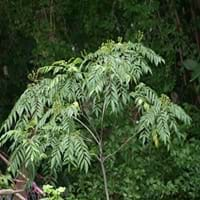Life Span
Perennial
Perennial
Type
Bulb or Corm or Tuber
Tender Perennial
Origin
South America
Southern Europe, Mediterranean, Turkey
Types
Pamianthe cardenasii , Pamianthe parviflora , Pamianthe peruviana
Not Available
Number of Varieties
Not Available
Habitat
All sorts of environments
Hillside, Rocky areas
USDA Hardiness Zone
8-10
7-11
Sunset Zone
21,22
H1, H2, 13, 14, 15, 16, 17, 18, 19, 20, 21, 22, 23, 24
Habit
Clump-Forming
Cushion/Mound-forming
Flower Color
White
Yellow
Flower Color Modifier
Bicolor
Bicolor
Fruit Color
Green
Sandy Brown
Leaf Color in Spring
Dark Green
Light Green, Gray Green
Leaf Color in Summer
Light Green
White, Gray Green, Gray
Leaf Color in Fall
Several shades of Green
White, Gray Green, Gray
Leaf Color in Winter
Light Green
Light Green
Leaf Shape
Strap shaped
Small elliptic
Plant Season
Spring, Summer, Fall
Summer, Fall
Sunlight
Partial Sun, Partial shade
Full Sun, Partial Sun
Type of Soil
Loam, Sand
Loam, Sand
The pH of Soil
Acidic, Neutral, Alkaline
Neutral, Alkaline
Soil Drainage
Average
Well drained
Bloom Time
Spring, Late Spring, Early Summer, Summer, Late Summer
Summer, Late Summer, Early Fall
Tolerances
Drought
Drought
Where to Plant?
Ground, Pot
Container, Ground
How to Plant?
Offsets
Seedlings, Stem Planting, Transplanting
Plant Maintenance
Medium
Medium
Watering Requirements
Keep the ground moist but not water-logged
Requires regular watering, Water Deeply, Water more in summer, Water when top layer of soil becomes dry
In Summer
Lots of watering
Lots of watering
In Spring
Moderate
Moderate
In Winter
Average Water
Average Water
Soil pH
Acidic, Neutral, Alkaline
Neutral, Alkaline
Soil Type
Loam, Sand
Loam, Sand
Soil Drainage Capacity
Average
Well drained
Sun Exposure
Partial Sun, Partial shade
Full Sun, Partial Sun
Pruning
Pinch or prune as they grow to promote branching and bushiness, Remove damaged leaves, Remove dead branches, Remove dead leaves, Requires little pruning
Prune if you want to improve plant shape, Prune in early spring, Prune to stimulate growth, Remove damaged leaves, Remove dead branches, Remove dead leaves
Fertilizers
All-Purpose Liquid Fertilizer, High phosphorus
organic fertlizers
Pests and Diseases
Leaf spot, Mosaic viruses
Red blotch
Plant Tolerance
Drought
Drought
Flower Petal Number
Single
Single
Fragrant Bark/Stem
No
Yes
Foliage Texture
Coarse
Fine
Foliage Sheen
Glossy
Matte
Attracts
Bees, Birds, Bumblebees, Butterflies, Hummingbirds, pollinators
Insects
Allergy
Unknown
no allergic reactions
Aesthetic Uses
Beautification, Bouquets, Ornamental use, Showy Purposes
Not Used For Aesthetic Purpose
Beauty Benefits
No Beauty Benefits
Improve hair condition, Improve skin condition
Environmental Uses
Air purification
Air purification
Medicinal Uses
No Medicinal Use
Anemia, chest congestion, Improve heart health, Liver problems, Skin irritation
Part of Plant Used
Not Available
Leaves
Other Uses
Beneficial species for attracting pollinators, Decoration Purposes
Economic Purpose, Employed in herbal medicine, Used As Food, Used as a spice
Used As Indoor Plant
No
No
Used As Outdoor Plant
Yes
Yes
Garden Design
Bog Garden, Container, Feature Plant, Foundation, Mixed Border, Water Gardens
Bedding Plant, Container, Cutflower, Edging, Herb / Vegetable, Mixed Border, Rock Garden / Wall, Topiary / Bonsai / Espalier
Botanical Name
HYMENOCALLIS longipetala
HELICHRYSUM italicum
Common Name
Peruvian Daffodil, Spiderlily
Curry Plant, Gold Strawflower
In Hindi
peruvian daffodil
करी संयंत्र
In German
peruvian daffodil
Currykraut
In French
peruvian daffodil
Usine de Curry
In Spanish
Pamianthe
planta de Curry
In Greek
peruvian daffodil
φυτό Curry
In Portuguese
peruvian daffodil
Curry planta
In Polish
peruvian daffodil
curry roślin
In Latin
peruvian daffodil
Curry plant
Phylum
Magnoliophyta
Magnoliophyta
Class
Liliopsida
Magnoliopsida
Order
Asparagales
Asterales
Family
Amaryllidaceae
Asteraceae
Genus
Pamianthe
Helichrysum
Clade
Angiosperms, Monocots
Angiosperms, Asterids, Eudicots
Tribe
Clinantheae
Gnaphalieae
Subfamily
Amaryllidoideae
Asteroideae
Number of Species
Not Available
Season and Care of Peruvian Daffodil and Curry Plant
Season and care of Peruvian Daffodil and Curry Plant is important to know. While considering everything about Peruvian Daffodil and Curry Plant Care, growing season is an essential factor. Peruvian Daffodil season is Spring, Summer and Fall and Curry Plant season is Spring, Summer and Fall. The type of soil for Peruvian Daffodil is Loam, Sand and for Curry Plant is Loam, Sand while the PH of soil for Peruvian Daffodil is Acidic, Neutral, Alkaline and for Curry Plant is Neutral, Alkaline.
Peruvian Daffodil and Curry Plant Physical Information
Peruvian Daffodil and Curry Plant physical information is very important for comparison. Peruvian Daffodil height is 61.00 cm and width 61.00 cm whereas Curry Plant height is 30.00 cm and width 30.00 cm. The color specification of Peruvian Daffodil and Curry Plant are as follows:
Peruvian Daffodil flower color: White
Peruvian Daffodil leaf color: Dark Green
Curry Plant flower color: Yellow
- Curry Plant leaf color: Light Green and Gray Green
Care of Peruvian Daffodil and Curry Plant
Care of Peruvian Daffodil and Curry Plant include pruning, fertilizers, watering etc. Peruvian Daffodil pruning is done Pinch or prune as they grow to promote branching and bushiness, Remove damaged leaves, Remove dead branches, Remove dead leaves and Requires little pruning and Curry Plant pruning is done Prune if you want to improve plant shape, Prune in early spring, Prune to stimulate growth, Remove damaged leaves, Remove dead branches and Remove dead leaves. In summer Peruvian Daffodil needs Lots of watering and in winter, it needs Average Water. Whereas, in summer Curry Plant needs Lots of watering and in winter, it needs Average Water.





